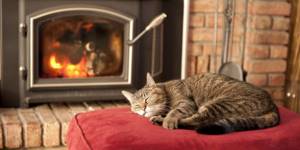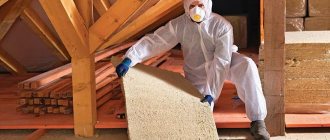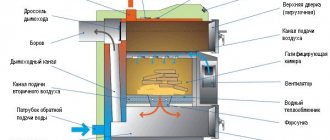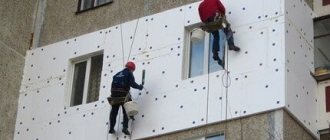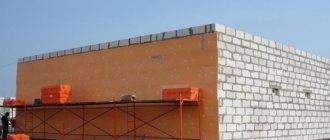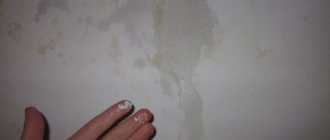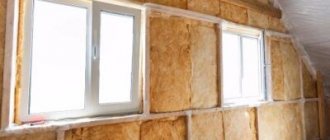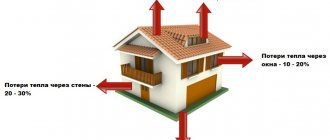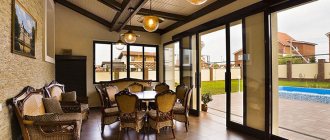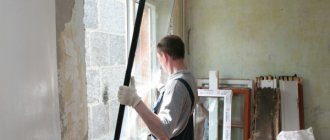Winter is just around the corner. In some regions of the country the air temperature has already reached zero. The cold will come very soon, and with it the heating season. However, warm radiators do not guarantee a comfortable room temperature. Often precious heat goes outside. There may be several reasons for this problem. And it’s better to determine them before the start of the heating season, because it’s not for nothing that folk wisdom says, “Prepare a sleigh in the summer, and a cart in the winter.”
The houses we live in are often insufficiently energy efficient. This applies to modern apartment buildings, Soviet buildings and individual housing construction. Energy for heating a home is required several times more than in EU countries. As a rule, frozen households see salvation in installing additional heaters, most often electric. But such a decision only leads to increased utility bills. It turns out that the consumer buys more heat than he ultimately gets. It's unpleasant, isn't it?
Causes of heat loss in the house
Before moving on to active measures to insulate your home, you should understand the possible causes of heat loss.
- Leaks in wall panel joints.
- Leaks in door and window units.
- Poor quality finishing of external walls.
- The integrity of the roof is compromised (including the junction of the roof with the protruding elements of the building).
- Poor quality drainage system from the roof and blind area.
- Faulty supply and exhaust ventilation system.
- Faulty thermal insulation of communications.
- Poor performance of the heating system - low-power heating boiler, old radiators.
These are the most common problems that home and apartment owners encounter. If at least one of the problems is detected, it should be eliminated immediately.
Preparatory work
How to properly insulate the walls of a wooden house from the inside largely depends on the correctly selected materials. If this issue is resolved, then you can move on to preparatory work, which consists of preparing the surface and making the sheathing.
For reference! When preparing the surface, it is necessary to seal the gaps that may have appeared between the beams or logs. To do this, you will need additional materials: tow, felt or polyurethane foam.
Wooden bars are most often used as lathing. Metal sheathing is rarely installed. The metal for the sheathing must be coated with an anti-corrosion compound.
Vertical wood lathing Source uk.aviarydecor.com
Preparation of wooden surfaces
To ensure high-quality application of the insulator, prepare the surface for coating with insulation. Tow/felt/foam is placed in the cracks. After the gap is completely closed, the foam has dried and its excess has been removed, putty is applied to the wall. The putty layer is carefully leveled. The wood is coated with a special compound that protects against mold and mildew. All wooden surfaces are treated with a fire-retardant compound before installing insulation.
See also: Catalog of wooden house projects presented at the Low-Rise Country exhibition.
How to keep your apartment warm
According to current standards, the temperature in the living room must be at least 18°C. Many will agree that this is not enough for a comfortable stay in the room. To ensure warmth and comfort in your nest, you will have to make some efforts. So, what to insulate and with what?
Walls
Traditional building materials, such as brick, concrete, reinforced concrete, can reliably protect housing from heat loss. But only with very large wall thicknesses. The cost of production, delivery and use of building materials is very high; the construction of thick walls is not economically feasible. Therefore, to reduce heat loss we have to look for other methods.
To prevent the wall from taking heat from the radiator, you need to install a protective screen made of ordinary foil between them. Due to this, the heat will be reflected and remain inside the apartment. The size of the shielding foil should be slightly larger than the dimensions of the battery. Heat loss when installing a protective screen will be reduced by 3%.
There is a more radical method of reducing heat loss through walls - thermal insulation. Experts say: insulating the external walls of an apartment will be much more effective. In addition, this allows you to carry out any finishing work, while living conditions and the area of the interior premises will remain unchanged. Insulating a wall in an apartment from the inside is also possible, but such work is accompanied by many inconveniences.
Entrance door
A lot of heat also escapes through the entrance group. A massive door is the key to a warm apartment. It is not necessary to make new purchases. To avoid big expenses, you can insulate the old door, for example, upholstering it with leatherette with a foam rubber gasket. If there are gaps between the wall and the door, they need to be sealed with polyurethane foam and plastered.
If you plan to buy a new door, then it is better to leave the old one too. This way you get two doors with a heat-insulating air layer between them. Measures to insulate and replace the door will reduce heat loss by 1.5%.
Window
Insulating windows is a long-standing tradition for residents of our latitudes. An increase in temperature of 1-2 degrees is possible! All joints between frames and sashes are sealed with cotton wool, foam rubber or tow and sealed with masking tape or, in the old fashioned way, with paper. You can also use foam rubber with adhesive tape or rubber sealing. These materials are perfect for eliminating loose closing of frames and sashes.
A successful solution to reduce heat loss is to install heat-shrinkable energy-saving film on the frame, parallel to the glass or double-glazed window. Thermal film is installed from the inside. It creates an additional heat-insulating layer and prevents heat loss.
Sometimes even replacing old wooden windows with plastic ones does not solve the problem of heat loss. There can be many reasons. The most common of them are: incorrect adjustment, poor-quality seal, leaky fit of the window sill and slopes. You can fix the problem yourself or call a specialist.
Insulating windows will reduce heat loss by 3-5%.
Furniture
Proper placement of furniture is also important in terms of heat conservation. You can protect yourself from an unheated wall using an ordinary cabinet, simply by isolating it from the source of cold. But it is not recommended to place any furniture near the radiator, as this prevents the spread of warm air throughout the room. The same applies to heavy thick curtains on the windows. They simply do not let heat into the room.
Perhaps, in order to enjoy the warmth, it is enough to reconsider the interior.
Video description
For some thoughts on the use of polystyrene foam and expanded polystyrene, watch the video:
In particular, there are many complaints about the release of toxins during combustion, plus it is believed that foam plastic evaporates harmful substances into the air even at normal temperatures.
The material does not allow steam to pass through well, and in a room without good ventilation, moisture will constantly accumulate.
The advantages of the material include relatively easy installation, which means that workers will not be required to have high qualifications, and the cost of the work will be lower.
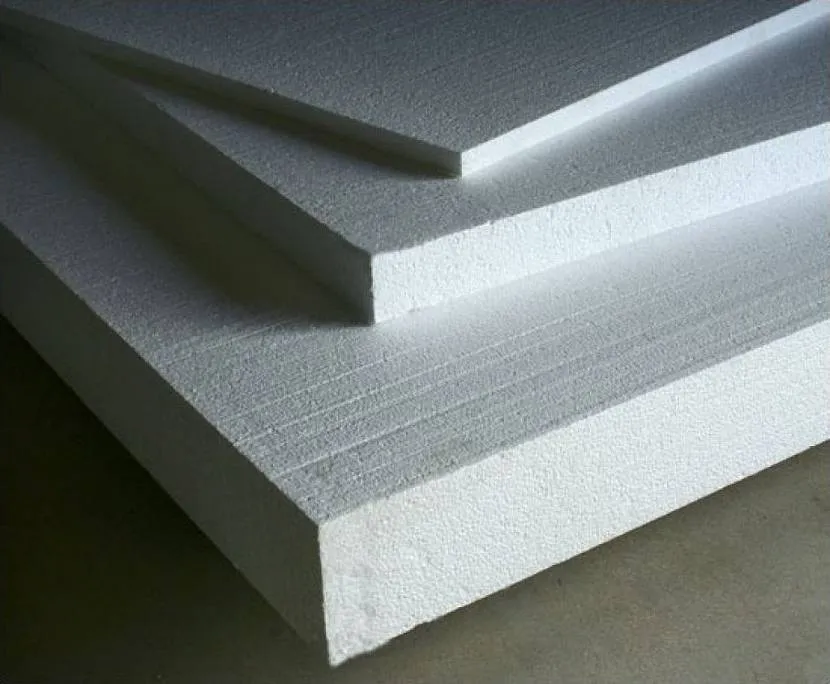
Polystyrene foam is available in slabs of various sizes and thicknesses Source on-woman.com
Stages of foam installation work:
- A lathing is installed on the pre-prepared surface with a pitch of planks equal to the size of the foam boards. Installation begins with load-bearing walls.
- Foam plastic is laid between the bars while maintaining a ventilation gap.
- A membrane film is fixed on top of the insulation . If it is possible to use other materials for other insulators, a special film with membranes is chosen for foam plastic. It will allow you to maintain a normal microclimate in the room.
- The installation of insulation is completed with finishing work .
Useful tips
- Open the curtains and let the sun into your apartment! During daylight hours in clear weather, this will help raise the temperature by a couple of degrees.
- Lay a carpet on the floor - this is an excellent barrier to cold air and an additional layer of insulation.
- Leave the door to the bathroom open after water procedures - warm air will fill the neighboring rooms and make them a little warmer.
- Use a fan - direct the air flow towards the radiator, this will help the heat spread throughout the room faster.
- Don't rush to close the oven after cooking dinner - use warm air to heat the kitchen.
- Close interior doors - do not allow heat to escape into a room where no one is present.
Winter is just around the corner. Preparing your home for severe frosts will help you comfortably survive this period without additional unwanted expenses. How do you prepare for winter?
The need and methods of additional insulation
Quite often, in order to retain heat in the log house, the owner decides to add additional insulation. Typically, such work concerns three main parts of the building: walls, floor and ceiling. The technology for their implementation can differ quite a lot, as well as the materials used. The most commonly used for additional insulation today are:
- Mineral wool. The most popular insulation material, which is actively used both for walls and ceilings of wooden houses. The main advantages of the material are its affordable price, ease of use technology and excellent insulation parameters;
- Styrofoam. The second most common insulation material, which, compared to mineral wool, has a significant drawback - flammability. In terms of other characteristics, it is practically in no way inferior and is used both for walls and floors with ceilings;
- Modern insulation materials, for example, penofol, penoplex, extruded polystyrene foam, etc. They are used more and more every year. The main advantages include low thermal conductivity, affordable cost and ease of use;
- Expanded clay. It is still used quite often, mainly for insulating floors or attic floors. The advantages of this material are obvious - low price and availability. The disadvantage is the insufficient level of insulation parameters, requiring a large layer thickness.
The choice of a specific material depends on several factors. These include the tasks facing the work manufacturer, the type of insulated structure and the financial capabilities of the owner. It is important to note that wall insulation is almost always carried out from the outside and is accompanied by the installation of an external decorative layer, which increases the aesthetic parameters of the building.
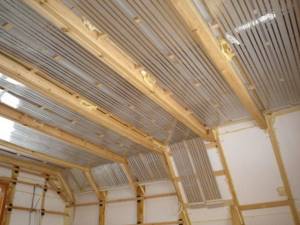
Stock up on heating pads
Of course, an electric sheet is the result of technological progress, but hot water in a rubber heating pad or a simple plastic bottle was, is and will be one of the simplest and most effective means for heating a bed or body. It’s not for nothing that servants put copper hot water bottles in their masters’ beds several centuries ago. And now the rules of the game have not changed: put a heating pad in your bed before going to bed - and enjoy the warmth.
It is worth noting that there are special heating pads on sale that can be placed in the microwave. Heat it for one minute and you are ready to use. In addition, there is a salt heating pad: it heats up due to the crystallization of salt. The temperature of such a heating pad reaches 52 degrees Celsius.
Close the curtains at night
During the day, windows repel more radiant energy than they allow through. Only sunlight penetrates freely through the glass. For infrared rays, this material becomes an obstacle. At night, thin single-pane glass units can cause extreme cold. Even if you try to maintain the air temperature in your apartment at about 20 °C every day, with the arrival of darkness and a sharp drop in temperature outside, this value can drop to 7 °C.
Like Kristina or Varum: fans are wondering who Pugacheva looks like in the new photo
Oreo cookies and cream cheese: making red velvet cheesecake
Test your school knowledge: only a genius can answer 9/9 (test)
Double glazed windows are also not always able to keep the heat in the house. Even a small drop in temperature, up to 14 ° C, will lead to energy losses of approximately 50-100 W per square meter.
The best way to prevent such a sudden loss of stored heat is to close the curtains immediately after sunset. This will provide an additional barrier to radiant energy in the room. In addition, curtains will protect against drafts and partially isolate the room.
